If you have a small yard, plant these 18 lowmaintenance shrubs for a beautiful and chic look
Low-maintenance shrubs are the go-to plants for today's time-poor homeowners when creating a landscape for their yard. Low-maintenance shrubs provide beautiful natural landscape structure, require little pruning, are pest and disease resistant, bloom reliably, and tolerate varying growing conditions. Some low-maintenance shrubs are evergreen, while others produce colorful flowers, but all low-maintenance shrubs require little care other than adequate watering.
Here's a rundown of 18 of my favorite low-maintenance shrubs for the home garden. Each has its own merits, and I've divided them into categories based on their most noteworthy features. As a professional gardener, I've used may shrubs for many years, and these easy-care choices are my personal favorites.
1. Low-Maintenance Shrubs That Bloom in Early Spring
Weigela
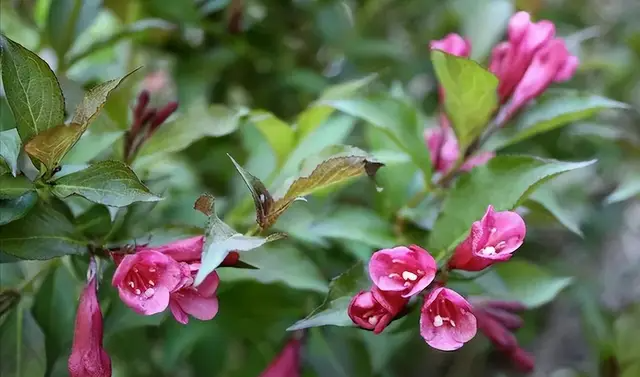
Weigela, Caprifoliaceae, has a distribution of about 10 species, mainly distributed in East Asia and Northeast America. There are 2 species, and another 1-2 species are cultivated in gardens for ornamental purposes. Weigela is a real garden, known for its natural and prolific flowers. The pink tubular flowers that attract hummingbirds appear from April to June. It is very resistant to pests and diseases, and is pruned once the flowers fade. Weigela likes full sun, but can also grow well in semi-shade environments. Some varieties have wine-red leaves or variegated leaves.
clove
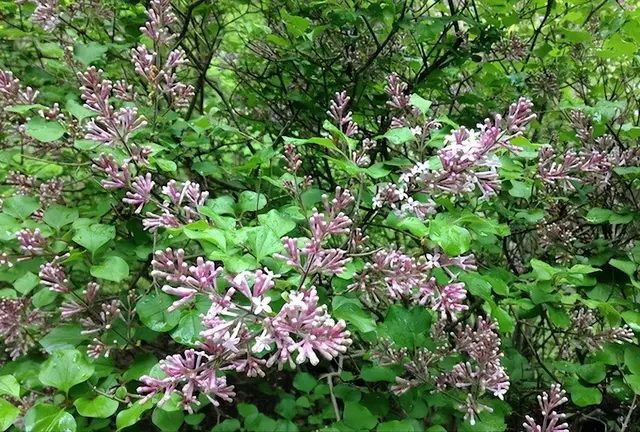
Lilac is a hardy deciduous shrub. This lovely, easy-care shrub reaches a maximum height of 4 to 5 feet with a spread of 5 to 7 feet. The pale pink to purple clusters of flowers appear in April, May, and June and are slightly fragrant, attracting hummingbirds and butterflies. Full sun is good for the best blooms, but some lilac varieties can tolerate partial shade. If you feel you must prune, prune immediately after flowering. Slow-growing, compact, and rounded, lilacs are a low-maintenance flowering shrub that you’ll love once and for all!
2. Mid-Spring Flowering Shrubs
Cotinus coggygria
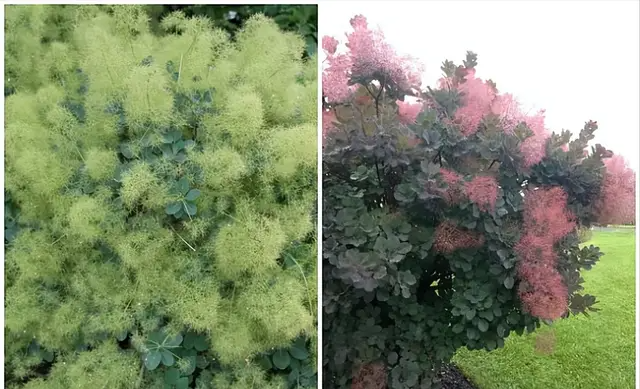
Cotinus coggygria is a unique deciduous shrub. It reaches a height of 10 to 15 feet with an even spread. Flowers appear from May to July in clusters of yellow flowers with fuzzy petals that look like foam and smoke. It does best in full sun and poorly drained soil. Depending on the variety, the leaves can be blue-green or burgundy. Prune in early spring as needed.
Virginia rat
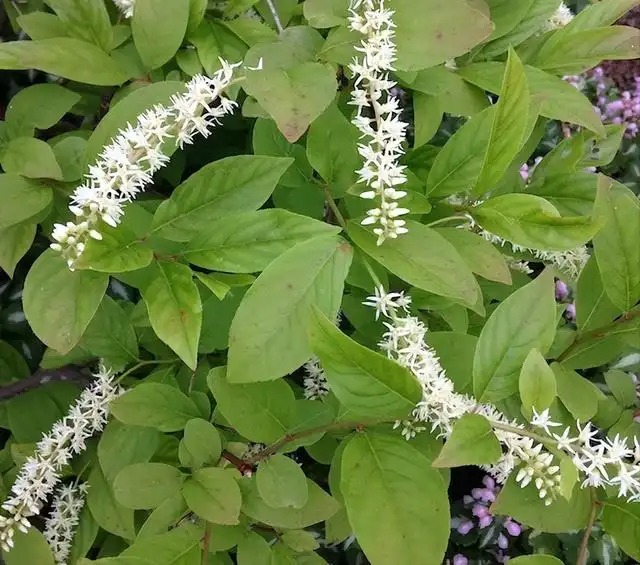
Virginia Mousethorn is a deciduous shrub native to eastern North America. It grows 3 to 5 feet in height, evenly spread, and blooms in May and June. The flowers are in panicles of white blooms, which are fragrant and prefer full sun. It is best pruned in late spring or early summer after the plant has finished blooming. This low-maintenance shrub is great for low-lying areas or rain gardens. The leaves turn a brilliant red in the fall. It has a rounded growth habit with arching branches and has no pest or disease problems.
3. Low-Maintenance Shrubs That Bloom in Summer
Spiraea
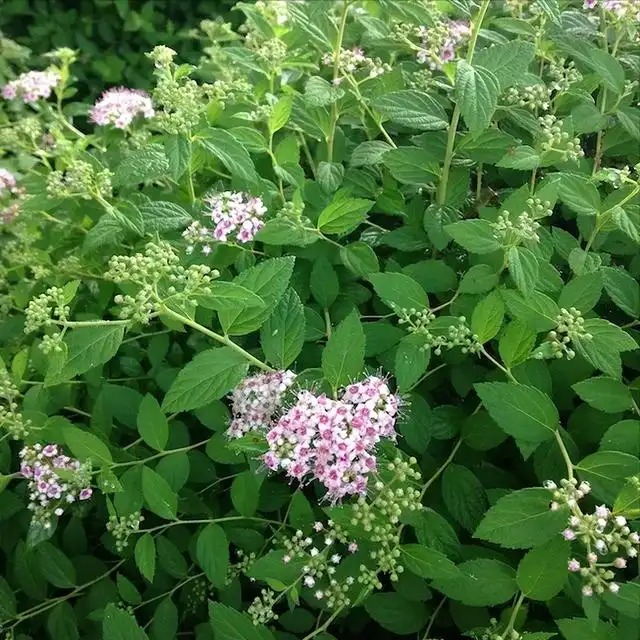
A deciduous plant native to Asia, Japanese spirea is hardy to -40 degrees. It reaches a height of 4 to 6 feet with a spread of 5 to 7 feet. Flat-topped pink flowers appear in clusters in sunny June and July. These low-maintenance shrubs are attractive to butterflies and other pollinators. Prune the plants as soon as they bloom to get a second bloom. A second pruning should be done in late winter to early spring.
Oak Leaf Hydrangea
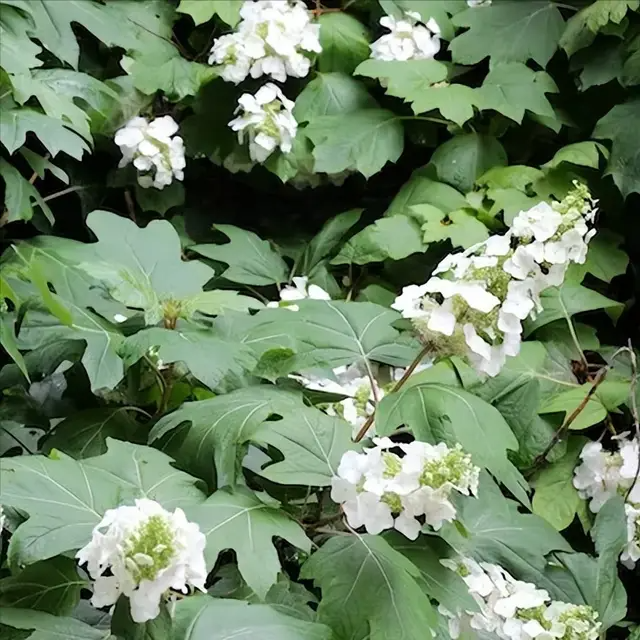
Oakleaf Hydrangea is a deciduous shrub native to the southeastern United States and is one of the easiest, low-maintenance shrubs for gardeners to care for. It has large, cone-shaped clusters of white flowers in early summer that eventually turn pink and are very showy. It reaches a height of 6 to 8 feet with an even spread. Oakleaf Hydrangea thrives in full sun. In the fall, the large oak-leaf-shaped leaves turn beautiful shades of orange, red, and purple. It does well in moist soil, but regular garden soil will work just fine. It only needs to be pruned right after flowering, but I recommend not pruning at all.
Alder
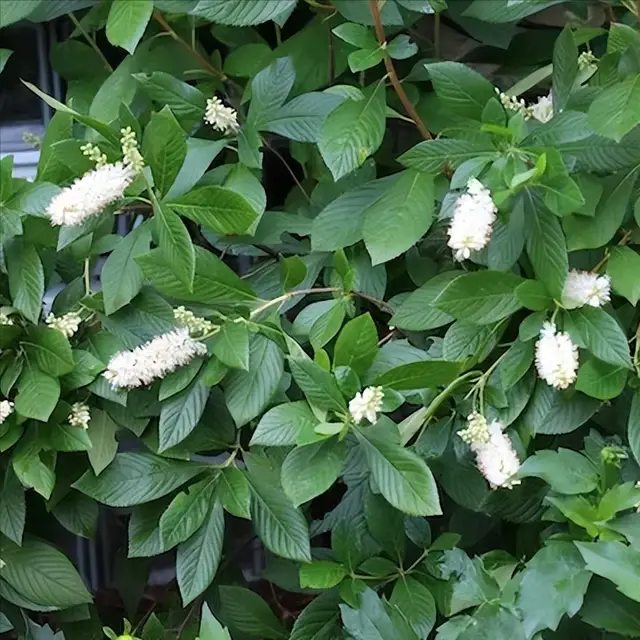
These low-maintenance shrubs reach a height of 3 to 8 feet with a spread of 4 to 6 feet. Upright, slender panicles of white to pink flowers appear in July and August. They thrive in full sun to part shade and tolerate both normal and moist soils. If pruning is necessary, do it in late winter. The dense branches bear flowers that are attractive to butterflies and bees.
Shrub roses (shrub roses)
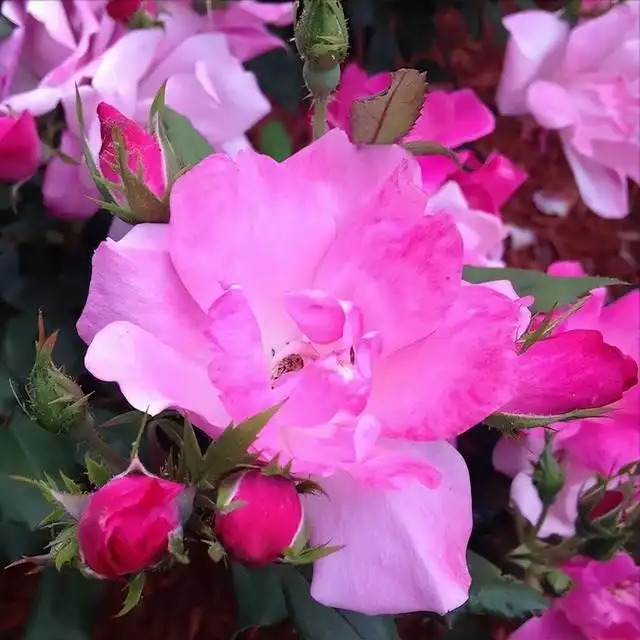
There are many types of shrub roses that are considered low maintenance shrubs. Most shrub roses reach 3 to 4 feet tall with evenly spaced, uninterrupted blooms. All shrub roses are easy to care for, hardy, prolific bloomers, and require little care. Most plants are disease and pest resistant and bloom in summer. Shrub roses prefer full sun, although some only need 3 to 4 hours. Pruning is best done in the spring, although removing spent flowers throughout the bloom period helps produce more flowers.
Annabelle
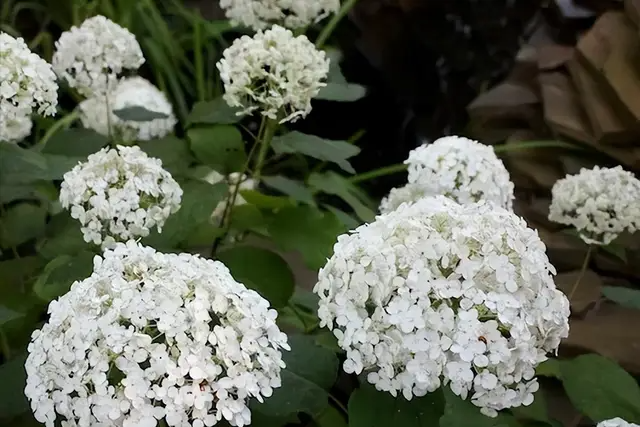
'Annabelle' is a deciduous shrub that tolerates -40 degrees Fahrenheit. It blooms from June to September, offering huge, foot-wide balls of white flowers that fade to light pink or green as the season progresses. 'Annabelle' blooms on new wood, so there's no worry about the buds freezing. Pruning should be done in late winter or early spring. Cut the plants back to a height of 12 to 18 inches to encourage good plant form. Tolerant of both wet and dry soils, 'Annabelle' tops out at 3 to 4 feet in height, with a slightly wider range. Partial shade is best, as the plant tends to wilt in strong sunlight.
Horse Chestnut
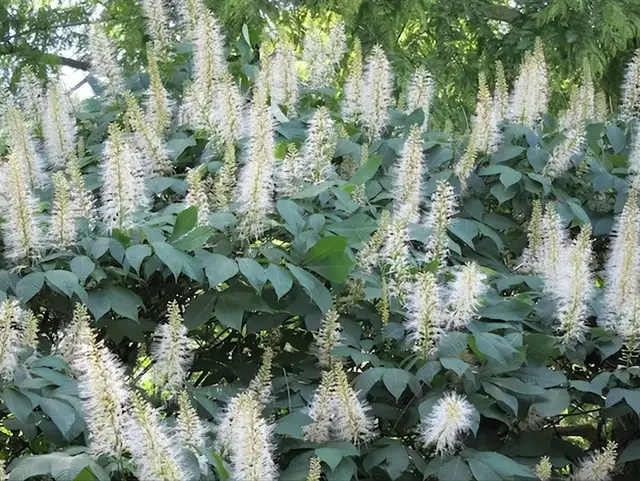
The horse chestnut is a deciduous shrub native to the southeastern United States. It grows 8 to 15 feet tall with a height of 8 to 12 feet. The upright white flower spires are up to 12 inches or longer. Occasionally, the flowers are followed by horse chestnut nuts, but they do not appear often. The horse chestnut has a bright yellow foliage color in the fall. The plant has no common pest and disease problems. This plant can be pruned immediately after flowering, but it is best not to prune.
Low-Maintenance Shrubs That Bloom in Winter
Witch Hazel
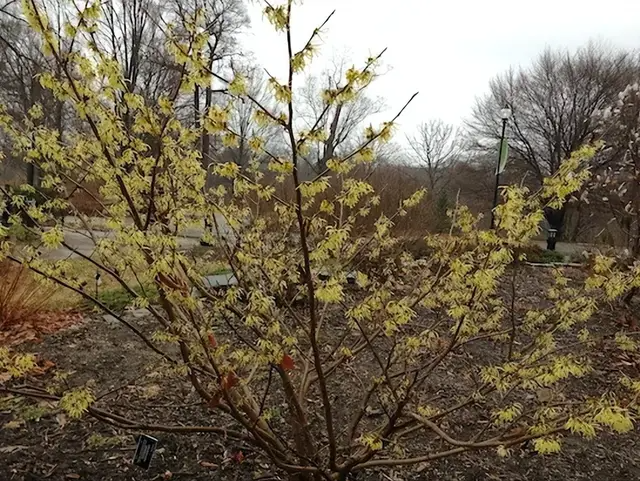
Witch hazels are really cool low-maintenance shrubs, and different species and hybrids bloom at different times. My favorites are the spring witch hazels, because they bloom in the winter when few other plants do. Witch hazels have a beautiful spicy scent, and their yellow, thread-like petals stand out against the bare branches. The fall foliage color is lovely, too. Witch hazels are cold-hardy and grow to a height of 6 to 10 feet.
Fragrant
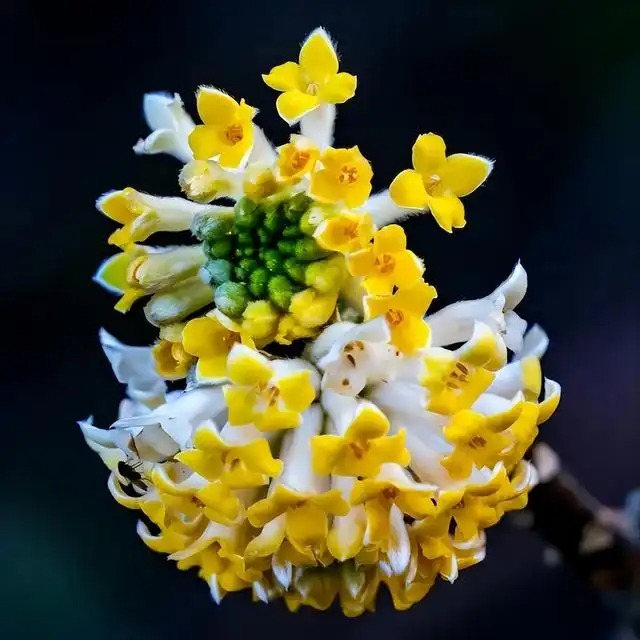
Fragrant osmanthus is a famous and unique flower that can be cultivated for viewing flowers or leaves; it is also an important economic tree species, and its flowers, bark, branches, and roots all have high economic value. Round clusters of bright yellow flowers are produced from February to April. The plant can tolerate full sun to partial shade and reach a height and spread of 4 to 6 feet.
Penglai Flower
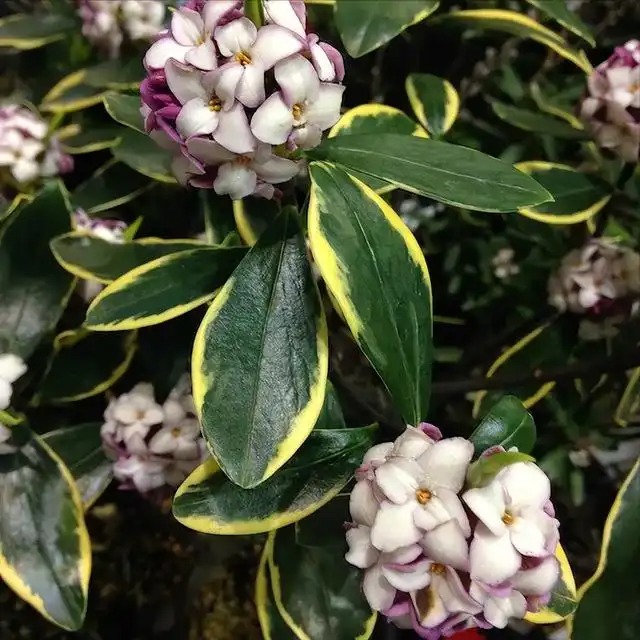
The penglai flower, also known as the golden-edged daphne, is a traditional and world-famous flower, known for its amazing fragrance . In modern horticultural history, it is revered as one of the three treasures of horticulture along with the Changchun Monk Clivia and the Japanese five-needle lunbo. The golden-edged daphne is known for its "color, fragrance, posture, and rhyme", leaving behind the chant "The peony is the most beautiful and fragrant, and the daphne is the best with golden edges". The penglai flower has variegated leaves and rose-pink flower clusters. It is best suited to warm climates, is not cold-resistant, and can only reach a maximum height of 3 feet. This plant requires almost no pruning.
5. Low-Maintenance Shrubs with Decorative Berries
Viburnum
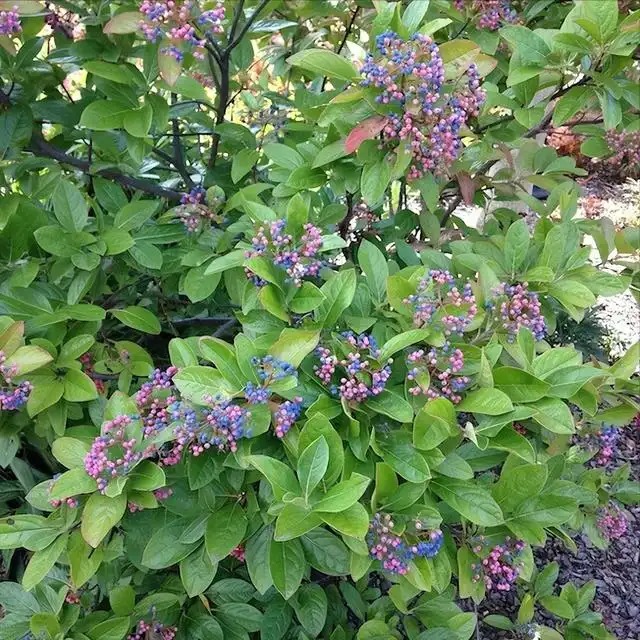
Viburnum is a deciduous shrub that flowers in April and May and is known for its beautiful fall berries that range from pink to deep blue, with both colors often appearing simultaneously . A clumping, upright deciduous shrub, there are approximately 150-170 species worldwide. Viburnum is an excellent choice if you are looking for a low-maintenance shrub with fall and winter interest . This shrub grows in full sun to partial shade and is attractive to birds and pollinators. It has few pests and requires little pruning.
American Beauty
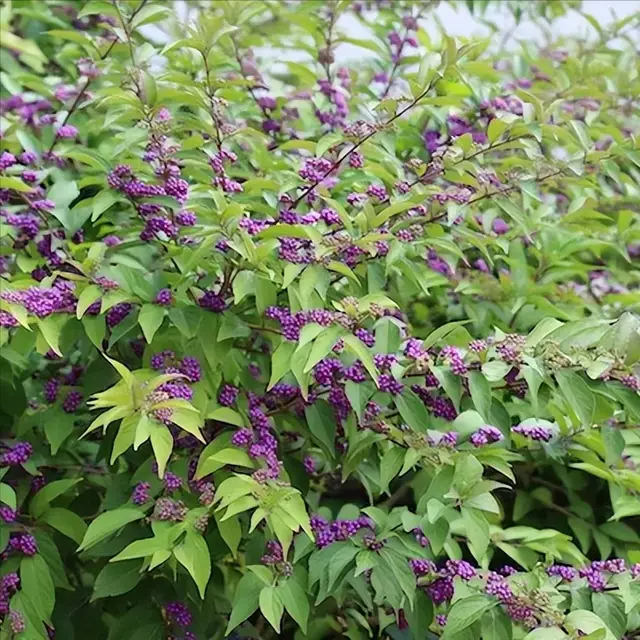
Not only are these low-maintenance shrubs pest-free, but they have a lovely arching shape and require little pruning. Native to the United States, they reach 3 to 6 feet in height and girth. Small pink flowers are followed by bright purple berries that last into the winter and attract birds. Full sun to partial shade is best. Pruning is best done in early spring.
Cotoneaster serrata
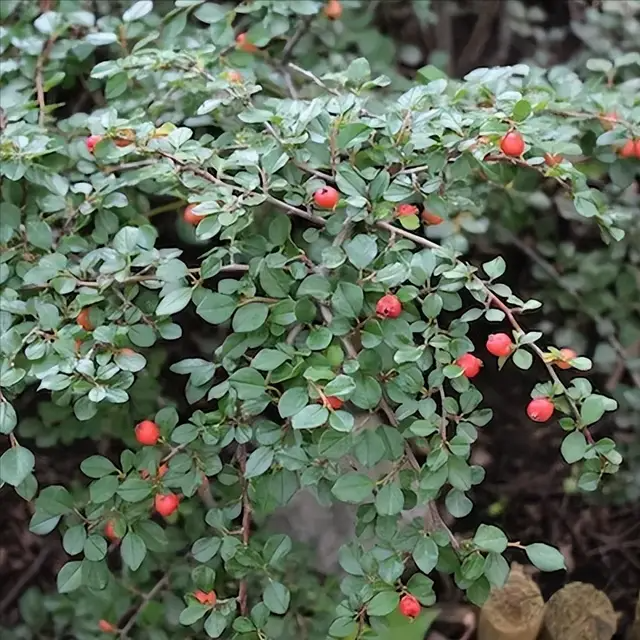
Cotoneaster serrata, also known as ground centipede, small-leaved cotoneaster, dwarf red cotoneaster, is a semi-evergreen creeping shrub suitable for garden ground cover and bonsai. It blooms in spring and produces bright red berries. The berries are attractive to birds. The main disadvantage of this shrub is that it is prone to problems with lace bugs. A widely adaptable plant, it grows slowly, can tolerate drought and poor soils, and requires little pruning.
6. Evergreen Low-Maintenance Shrubs
Golden Cypress
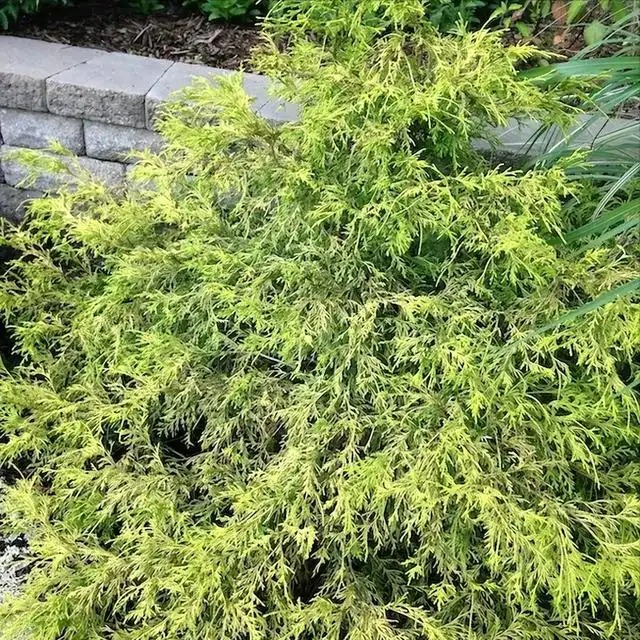
These evergreen low-maintenance shrubs are common in modern landscapes. The yellow-green needles are pleasing to the eye year-round. Golden Cypress is a semi-dwarf evergreen shrub with a natural conical shape. It grows slowly, with thread-like yellow branches. Unlike the parent species, which can grow to 50 feet or more in its native Asian range, this variety grows slowly to 15 to 20 feet tall but can be pruned to keep it more compact. It performs best in full sun but will tolerate some shade. The natural growth habit of this shrub means that no pruning is needed.
holly
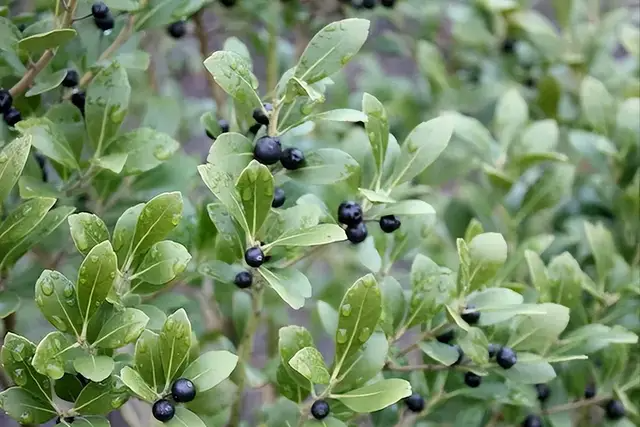
This broadleaf evergreen is native to North America and makes an excellent foundation plant. Dark green, glossy leaves remain attached to the branches year round. Nameless spring flowers are followed by dark blue berries. Grow in full sun to partial shade. They are adaptable and like all hollies, these plants are either female or male. To see berries, plant one male for every 5 female bushes. They generally require no pruning at all.
Of course, there are many other low-maintenance shrubs to choose from, but these are the standouts, and hopefully you’ll find some of them that are perfect for your landscape.